Art Nouveau architecture, characterised by its intricate ornamentation, flowing lines, and organic forms, during the first decades of the 20th century left an indelible mark on Belgrade, Serbia.
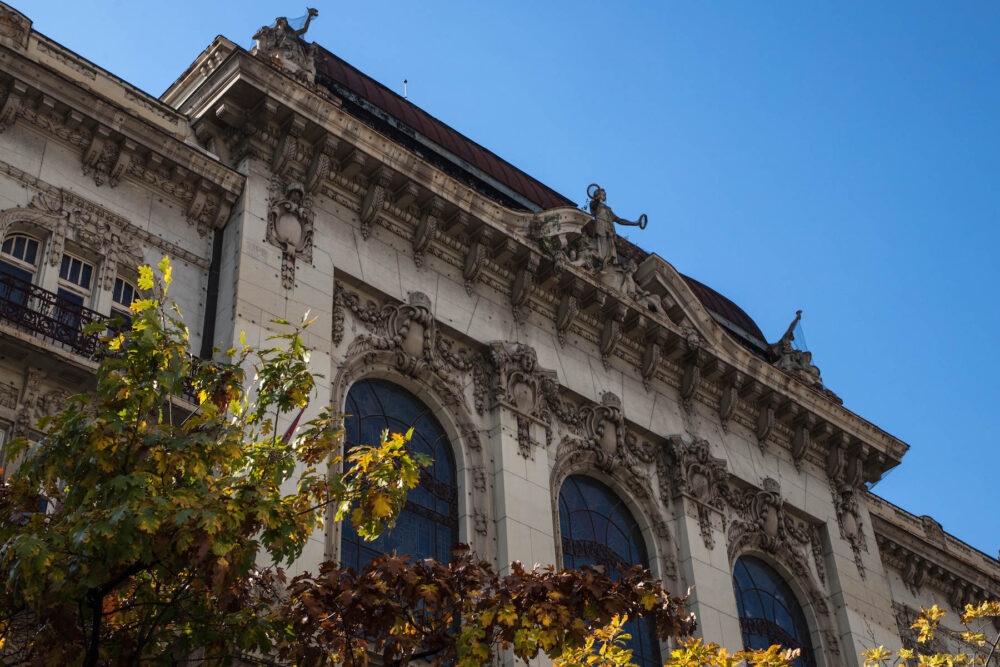
The Serbian Academy of Science and Arts (Photo: Darmon Richter)
Newly liberated from five centuries of Ottoman rule, the late 19th century Kingdom of Serbia had been a place of rapid modernisation. When the “May Coup” in 1903 ended the life of the autocratic King Alexander I, his successor, the liberal King Peter I, introduced a democratic constitution, and oversaw the beginning of an economic boom. Around that time, Serbia’s increasingly bourgeois urban elite fell head-over-heels in love with Art Nouveau, freshly imported from Paris; and its German counterpart, Jugendstil (“Youth Style”) via Munich and Vienna.
In the process, Belgrade made Art Nouveau its own: an optimistic break from the previous, backward-looking architectural styles, it was a fresh and globally fashionable aesthetic, yet with room for some uniquely Serbian embellishment.
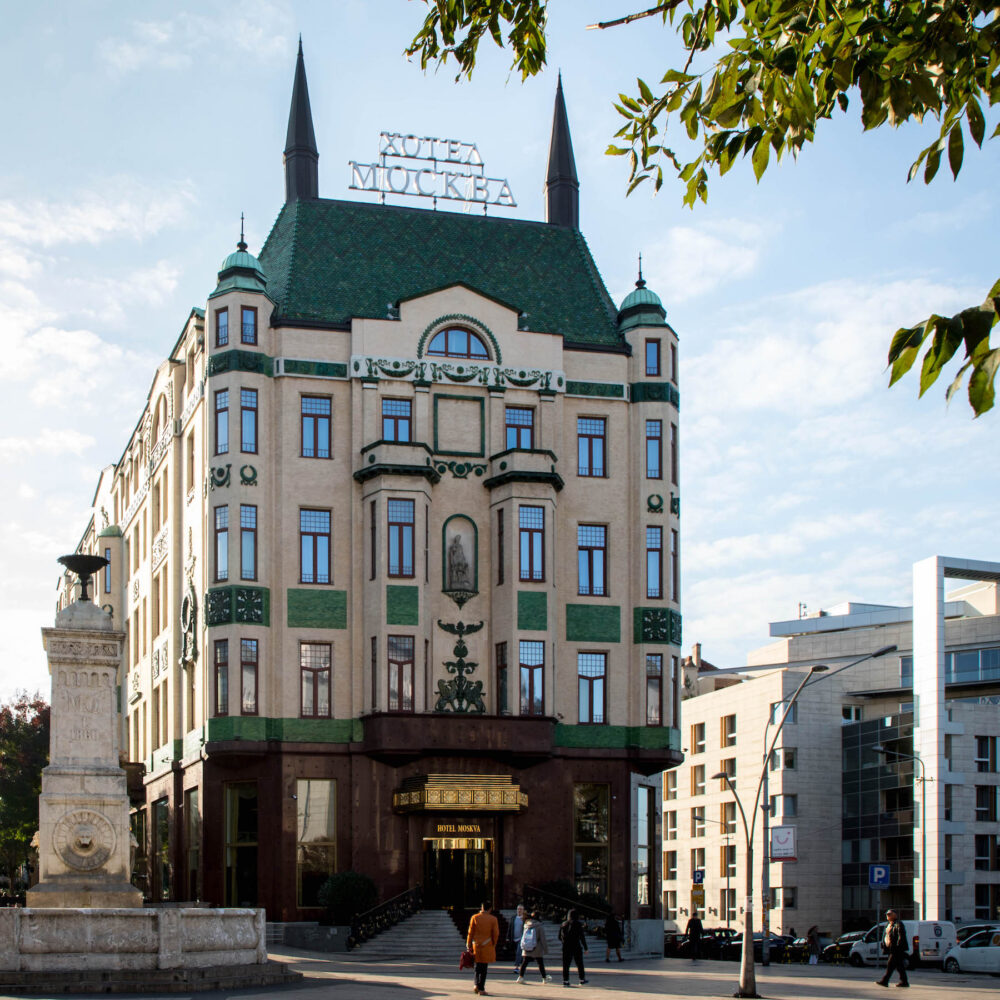
The Hotel Moskva, Belgrade (Photo: Darmon Richter)
While World War I brought an end to the frivolities, and many of Belgrade’s Art Nouveau buildings fell into disrepair, in recent years, an increasing number seem to be enjoying restorations. Many on this list have been recognised as sites of unique national heritage. The playful faces, leaves and curves of Art Nouveau architecture are very much part of the urban fabric of Belgrade today.
Beogradska Zadruga (Belgrade Cooperative) Building
A city’s architecture will often illustrate historic periods of boom and bust. Perhaps Belgrade’s most literal example of this is how the Beogradska Zadruga (Belgrade Cooperative) Bank commissioned for itself a magnificent new headquarters in the first decade of the 20th century, when the economy was healthy and Art Nouveau was the hottest style in town. The building was created by architects Andra Stevanović and Nikola Nestorović from 1905 to 1907, and they took liberal inspiration from the Belle Époque styles that had dominated at the recent 1900 Paris Exposition. This veritable palace of a building contained offices, shops and exhibition spaces across two floors, with lavish interior decorations including paintings, sculptures and chandeliers. The Beogradska Zadruga building is frequently described as one of Belgrade’s most beautiful buildings.
Karađorđeva 48, 10000, Belgrade
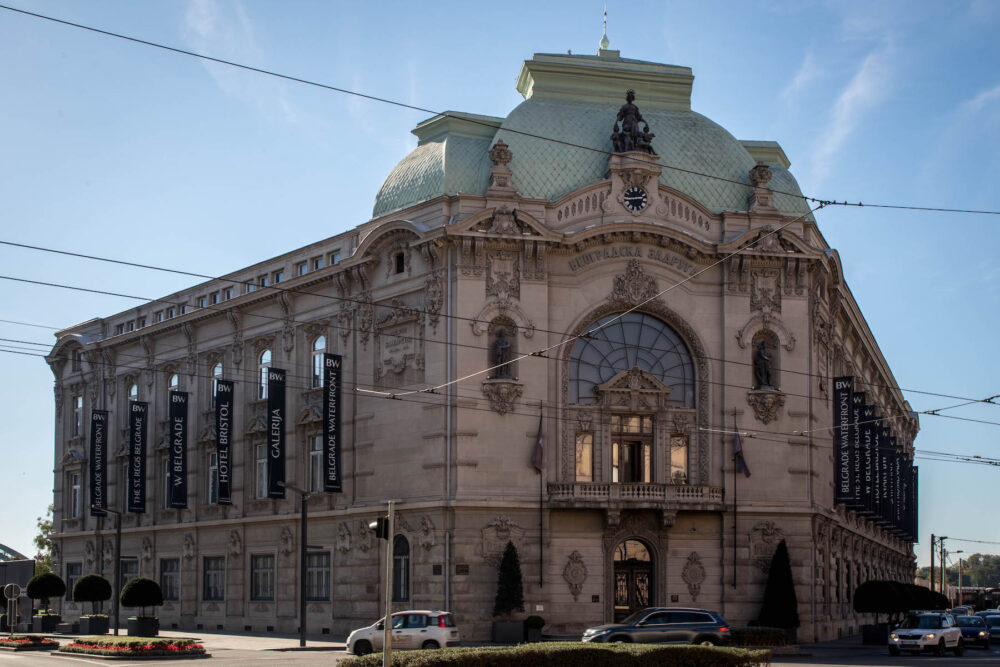
Beogradska Zadruga (Belgrade Cooperative) Building (Photo: Darmon Richter)
Department Store
Located on a leafy side street to Knez Мihailova Street, the pedestrianised centre of Belgrade, this rather exquisite example of Art Nouveau commercial architecture was the work of architect Viktor Azriel, in 1907. The building was the first of its kind here, designed to accommodate multiple interconnected floors for shopping, with the main facade taking the form of a wide glass window between marble pillars, and framed with wrought iron grilles. Today the building is a recognised cultural heritage site, and contains a popular coffee shop – allowing visitors to appreciate the architecture both inside and out.
Kralja Petra 16, 11000, Belgrade
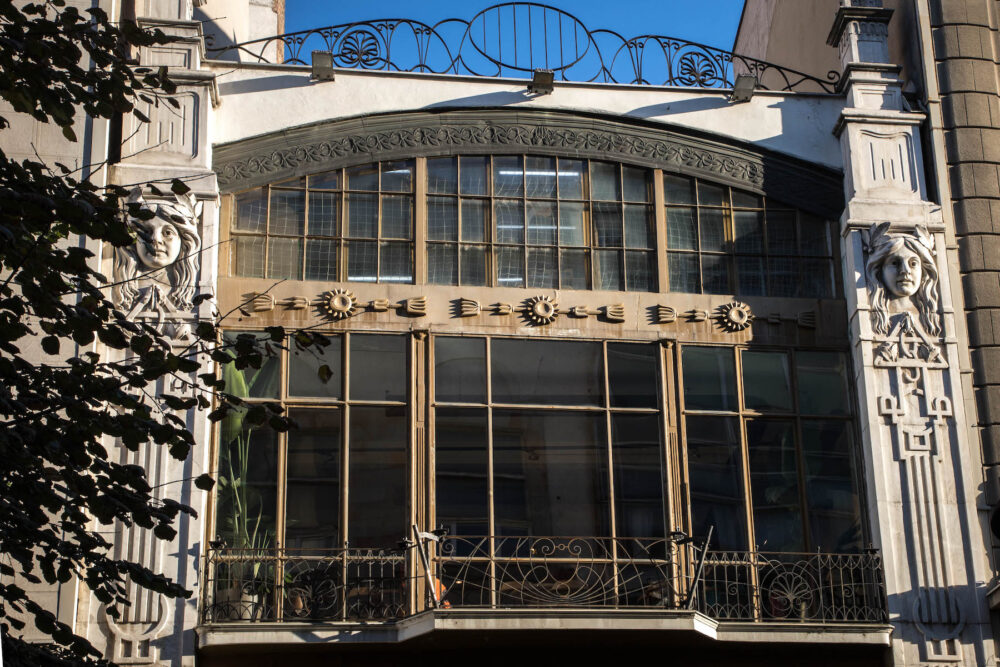
Robni Magazin (Department Store) (Photo: Darmon Richter)
Hotel Moskva
The Hotel Moskva has a long and storied history – a former 36-room inn that between 1905 and 1908 would be developed into what was then the largest privately owned building in Serbia. This new building, designed by architect Jovan Ilkić in a Secessionist style incorporating strong elements of Art Nouveau, was called the Palata Rosija (Palace of Russia). The Hotel Moskva originally existed as just one entity inside the larger building, alongside administrative offices, restaurants, and apartments for rent. During WWII and the Nazi occupation of Serbia, the building briefly became the local Gestapo headquarters – they looted it of various artworks and silverware, as well as changing its name back to Hotel Velika Srbija, after the original inn, as they didn’t much appreciate the Russian theme. The palace survived however, and today Hotel Moskva has grown to fill it. Amongst the building’s most notable characteristics are its ceramic tile facades, its turrets, and decorative elements including griffins and a relief of the Roman god Neptune.
Terazije 20, 11000, Belgrade
Nikolić Brothers’ Apartments
Many of the best examples of Art Nouveau in Belgrade appear on private residences. Merchants, bankers and political figures, when building fashionable townhouses in turn-of-the-century Serbia, would very often commission the city’s sought after Art Nouveau architects. This home for the Nikolić brothers in Belgrade’s Vračar district was built from 1912 to 1914 and designed by Branko Tanazević – one of the era’s most popular architects, whose other credits included the Old Telephone Exchange (1908), as well as Art Nouveau townhouses for Radisav Jovanović (1910) and Steva Jovanović Resavac (1912).
Njegoševa 11, 11000, Belgrade
Pavlović House
The home of Milan A. Pavlović, located on Belgrade’s Gračanička Street, was built as a private residence between 1911 and 1912. It was created by architect Nikola Nestorović, and the building’s exterior follows what might be termed Academic Classicism, or Beaux-Arts style, but with decorative elements strongly influenced by Art Nouveau. Pilasters and cornices frame the windows between Art Nouveau masks, while a circular dome rises from the roof above. The building has served various functions over the years, including as headquarters for an equestrian association (the Belgrade “Jockey Club”) and later for the Institute of Criminology and Sociological Research. The building had fallen into a serious state of decline, with photographs from the mid-2010s showing sections of plaster-less brick and crumbling stucco decorations. However, recent renovation work has done a lot to restore the original appearance.
Gračanička 18, 11000, Belgrade
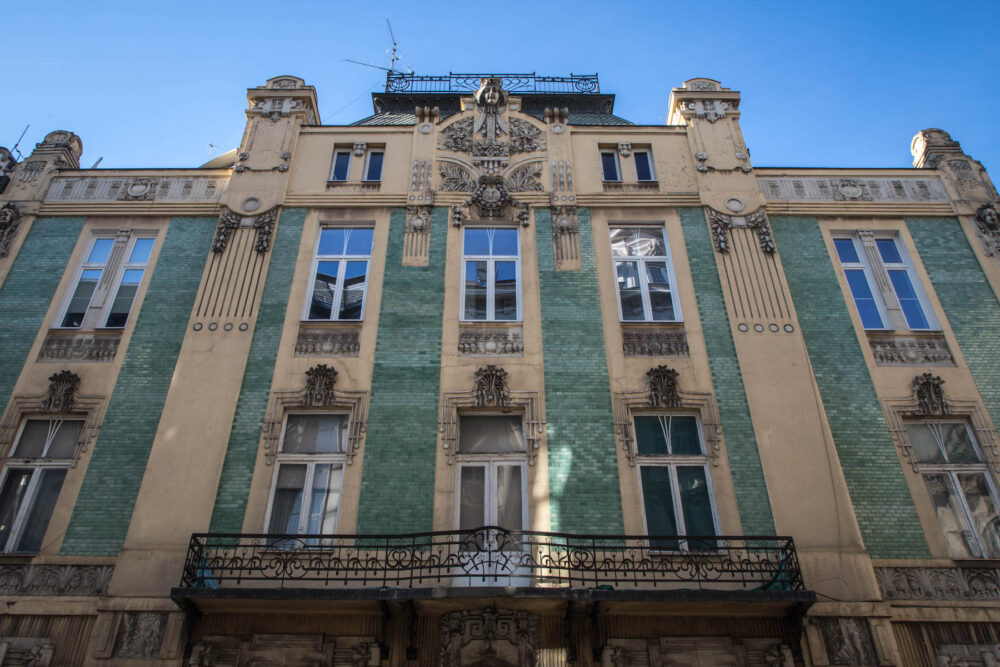
Stamenković House with green tiling (Photo: Darmon Richter)
Stamenković House
Kralja Petra Street was once one of the main trading streets in Belgrade, and this house, built prominently on the corner with Uzun Mirko Street, was created for the merchant S. Stamenković. The Stamenković family traded in skins, from which they became wealthy enough to afford multiple estates in the capital, and at one point also established their own family bank. The team of Nikola Nestorović and Andra Stevanović, who also worked together on the Beogradska Zadruga Building, completed the Stamenković House in 1907. The facade featured decorative heads, and cornices, in stucco and terracotta, as well as distinctive green tiling. The building is recognised today with the status of national cultural monument.
Kralja Petra 41, 11000, Belgrade
Serbian Academy of Science and Arts
The architect Andra Stevanović would work on this next building too, though this time in collaboration with Dragutin Đorđević. The Serbian Academy of Science and Arts was founded in 1841 (as the Society of Serbian Letters) and by the later 19th century, plans and proposals were being drawn for the magnificent building it now occupies on Knez Мihailova Street. Finding the funding for construction would prove the chief obstacle however, and it wasn’t until 1900 that design talks were able to begin in earnest. In 1910 the project’s architects – Stevanović and Đorđević – were announced, and the cornerstone was laid in 1914 by Crown Prince Aleksandar Karađorđević. Construction was then interrupted by World War I, with the building only being completed in 1924. Today it is considered one of Belgrade’s most strikingly decorative buildings – with a detailed facade that incorporates floral arabesques, masks and garlands, between large semi-circular windows. Above sits a series of sculptural groups, the centre-most representing Nike, the Greek goddess of victory and patron of art and music, holding twin wreathes that symbolise trade and industry.
Kneza Mihaila 35, 11000, Belgrade
House of the Vračar Beautification Society
Vračar is the name of Belgrade’s smallest and densest municipality, a city-centre area home to embassies, museums, and the Neo-Byzantine Temple of Saint Sava. In 1884, the Society for the Beautification of Vračar was founded, to preserve the history of the district through celebrations of its heritage, as well as installing plaques and dedications to Vračar’s most notable past residents. The society had its headquarters on Flower Square, in an Art Nouveau house created by Milan Antonović between 1901 and 1902. Antonović was another architect who was in hot demand that decade. His subsequent project, in 1903, involved creating a purpose-built Art Nouveau photography studio for the court photographer and painter Milan Jovanovic. The latter building utilised a glass roof to provide maximum light, and it’s claimed that it is the only purpose-built photo studio ever created.
Njegoševa 1, 11000, Belgrade
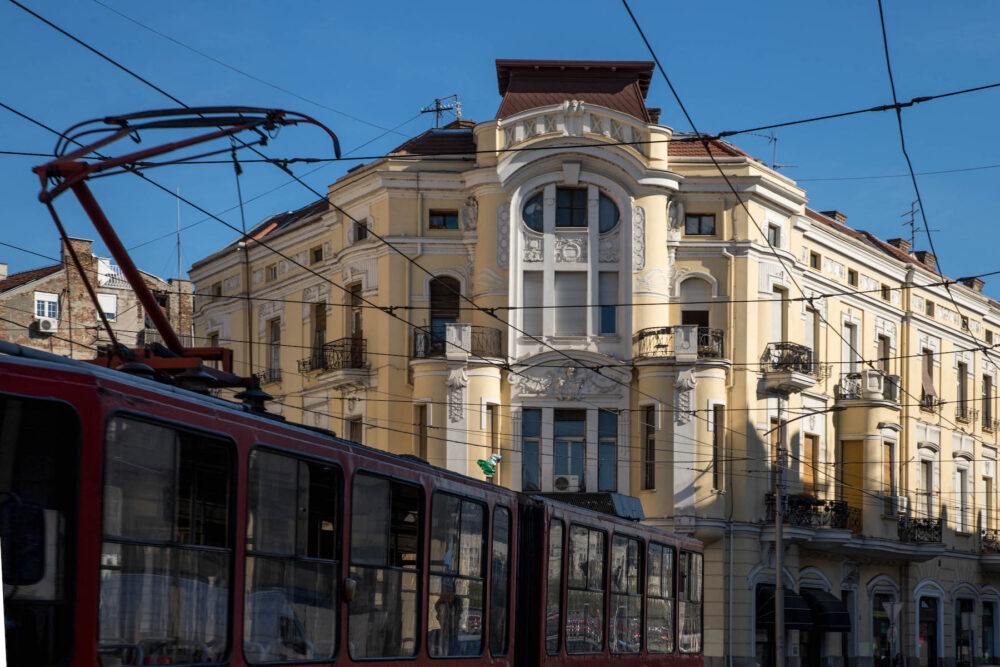
Vučo’s House (Photo: Darmon Richter)
Vučo’s House on the Sava River
On Karađorđeva Street, close to the river, the merchant Đorđe Vučo had this house built in 1908. The ground floor was designed to serve as commercial space, with a residential floor above it. Dimitrije Leko was the architect responsible, and his design brought in many Art Nouveau elements to the facade – including the shell-shaped central window, below which appears a woman’s face in plaster, presented on another shell design with floral garlands. Wrought iron balconies, more floral embellishments, and numerous animal likenesses complete the effect. Located directly opposite the Beogradska Zadruga, these two palatial Art Nouveau buildings create a powerful effect between them.
Karađorđeva 60–61a, 11000, Belgrade

Old Telephone Exchange, Belgrade (Photo: Darmon Richter)
Old Telephone Exchange
Another project by architect Branko Tanazević, the 1908 telephone exchange building on Kosovska Street is often presented as a prime example of the style known as Serbo-Byzantine Revival architecture (a regional variant of the broader Neo-Byzantine movement). Characteristic features include carved stonework, alternately-coloured brick layers, and patterns or motifs inspired by Serbian folk and handicraft traditions. Popular around the turn of the 20th century, it was concurrent with Art Nouveau and in many works the two styles could be seen in juxtaposition. Tanazević’s Old Telephone Exchange (which, in 1993, featured on the 50 million dinar banknote) is one such example. The asymmetrical building incorporates a dome, above a facade decorated with red and white brick, chessboard patterns and ornamental rosettes. Intermingled between knot-like designs, reminiscent of Serbian folk art, appear female busts in the unmistakable Art Nouveau style. The building additionally features numerous Masonic symbols amongst its decorations, making this arguably one of the most symbolically rich buildings in Belgrade.
Kosovska 47, 11000, Belgrade
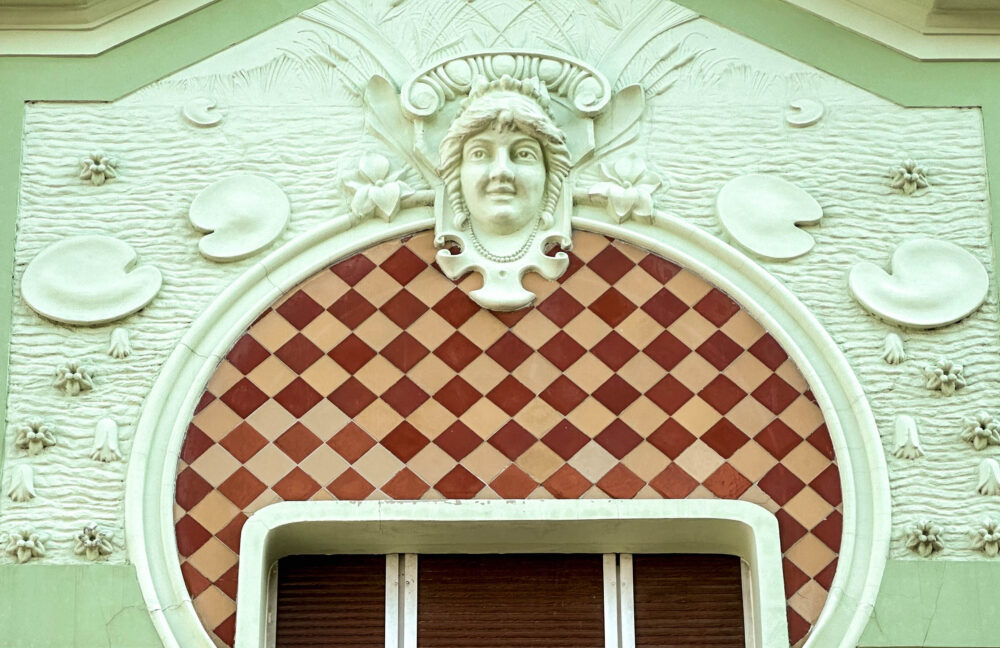
Bonus: Mihailo “Mika” Petrović Alas’s House by Serbian architect Petar Bajalović (Photo: Darmon Richter)